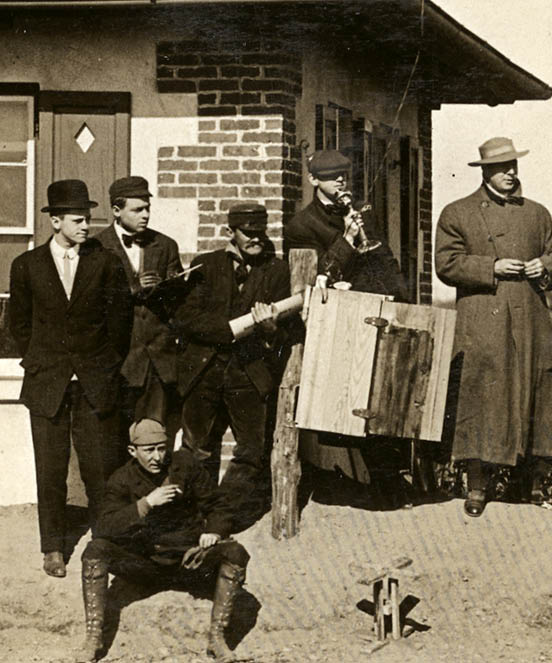Timing the 1904 Vanderbilt Cup Race

Rich, the timing for the Vanderbilt Cup Races was surprisingly accurate. The system for timing the races changed during the period that the races were held on Long Island. Below is a description of how the cars were timed for the 1904 Vanderbilt Cup Race.
AAA commission turned to the Boston Chronograph Club to take on the daunting challenge of timing America’s first international road race. Renowned for its skill, experience and accuracy in timing a variety of sporting events, the group built their reputation in the 1890’s heyday of bicycle racing. The Boston timers impressed observers in timing the Mt. Washington hill climb in July 1904, where the advanced technology of a telephone system was integrated into the process.
The 1904 Vanderbilt Cup Race also employed a state-of-the-art telecommunications network designed by the New York and New Jersey Telephone Company. Timers and judges each had their own, separate network of amplifiers and phones to connect the official grandstand with points around the course to monitor race progress and report emergencies. The timers’ phone system linked the Hempstead and Hicksville controls with the main grandstand.
All of this required over 500 miles of wire, with dozens of phone sets supported by four telephone company men stationed around the course on motor bicycles to be dispatched in the event of malfunction. The use of the phone system is no surprise given that A.R. Pardington, the chairman of the race, had a history in telephony as a former manager of the Long Island Bell Telephone Company during the 1890s.
The combination of the experienced timers using handheld watches communicating with telephones was deemed the only feasible approach to the complexities of a race with staggered starts beginning at 6 a.m. and scheduled to conclude by 3 p.m. with stops at the Hicksville and Hempstead Controls on every lap. Electric timing devices did exist, but were best suited for land speed record runs or races of short duration.
The controls complicated timing the race. Each competitor had to stop twice every lap, but the time spent in control did not figure into his running time on the course. Running time was calculated by subtracting control time from elapsed time, and this determined finishing position.
A heavy leather strap affixed a sealed drop box of burnished copper to each car, and time cards were inserted through a chute. There was an outer lid to the box held shut by a clasp. This lid protected the contents from dust and dirt. After opening the lid, timers then inserted the cards through the chute, much like a mailbox.
When the cars were sent off at 2 minute intervals at the start, the time was recorded and dropped in the box. Then, at the Hicksville Control, the drivers were required to stop between two tapes 25 feet apart, and, upon doing so, their arrival time was recorded and handed to an escort, who was on a bicycle. If a driver failed to come to a halt between the tapes, the clock kept running until they backed up and stopped. In Hicksville, they were required to spend 3 minutes in control, and in Hempstead, 6 minutes. After that, their departure time was recorded on the card and dropped in the box. The entrance and exit times were then reported to the officials’ grandstand by telephone for consolidated record keeping and race tracking.
Check back on VanderbiltCupRaces.com to see how the timing systems became automated for the later races.

Comments